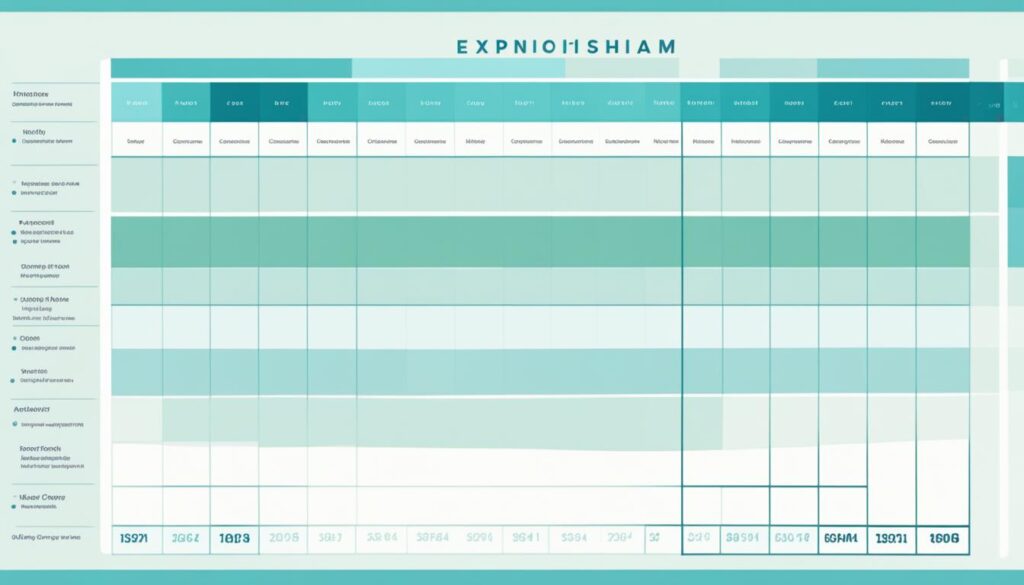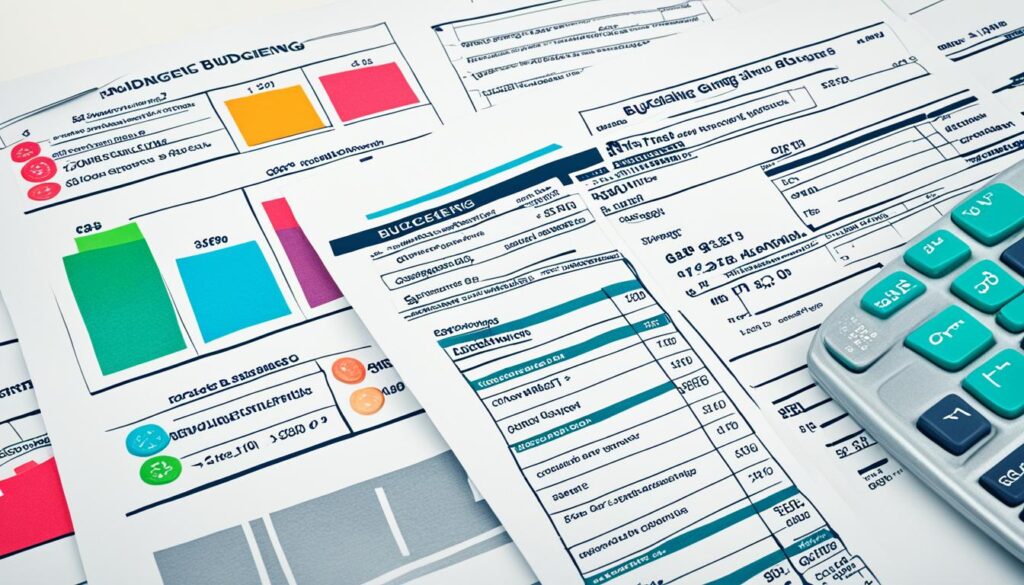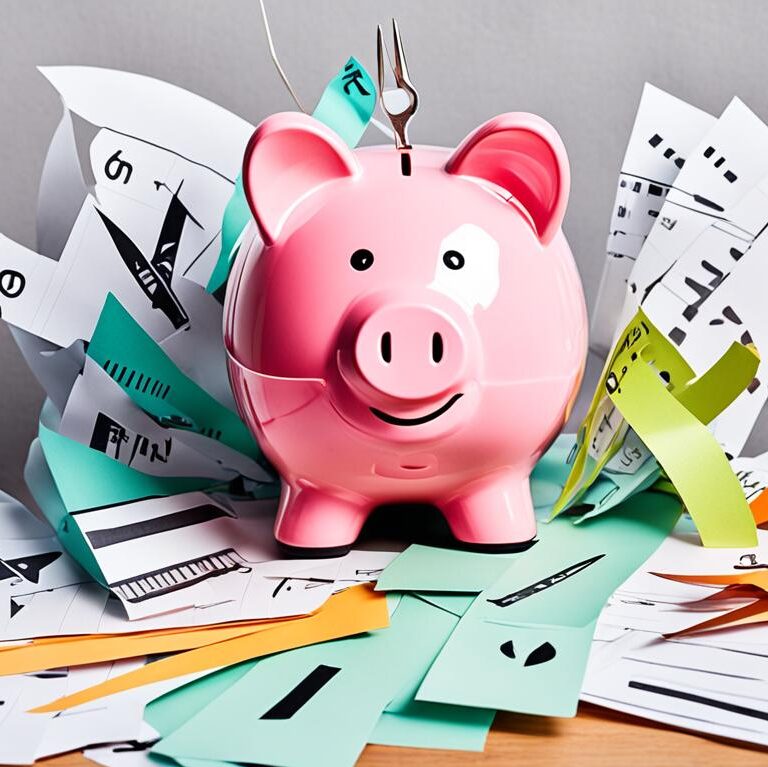“As an Amazon Associate I earn from qualifying purchases.”
Have you ever noticed how some people stay calm with their finances, even when bills spike? Equal Billing might be their strategy. It makes monthly budget planning predictable in our chaotic financial lives. It means creating a budgeting plan that actually works. We will look at the benefits of equal billing for financial management. This guide will show how it helps control finances for better stability each month.
Key Takeaways
- Understanding the benefits of equal billing in your monthly financial routine.
- Learning how equal billing can revolutionize your budget management practices.
- Tips for incorporating equal billing into your personal financial management plan.
- The importance of equal billing for a predictable and manageable monthly budget.
- Strategies to employ equal billing for smoothing out financial fluctuations.
Understanding Equal Billing and Its Role in Financial Management
Today’s economy is tough, but managing our money well is key. Equal Billing stands at the heart of good financial planning. It ensures we have steady payment plans and helps us budget better. This approach lets us handle our monthly money matters with more ease.
The Basics of Equal Billing Explained
Equal billing is a down-to-earth solution that many use every day. It figures out an average payment by looking at our past spending or upcoming expenses, setting up a steady amount to pay each month. Its goal is to smooth out the big spikes in our bills, like those from electricity or subscriptions, giving us predictable costs that make planning our finances easier.
How Equal Billing Smooths Out Monthly Financial Peaks and Valleys
Choosing Equal Billing means we prefer a smooth financial path over a bumpy one. It works like a car’s suspension, smoothing out the ups and downs of our bill payments. This system lets us set aside a consistent amount of money, making it easier to manage our budget. It’s a safety net for those times when surprise expenses pop up, helping keep our finances stable.
So, getting to grips with equal billing is key for anyone wanting to strengthen their financial health. It lays a solid foundation, softening the impact of unexpected bills. This way, our journey towards financial stability becomes a lot smoother.
What is Equal Billing and How Can It Help You When Creating Your Monthly Budget
Imagine a tool that keeps your monthly budget the same, without the big changes in utility bills or subscriptions. This is Equal Billing. It helps make managing money easier by making your payments more regular. Let’s look at how Equal Billing works and why it’s good for your budget.
With Equal Billing, you save money, time, and stress. This method is great for families who want their monthly expenses to be predictable. It takes away the surprise of sudden high bills. Let’s dive into the benefits of Equal Billing and how it makes budgeting better.
Under Equal Billing, your annual expenses for things like utilities are forecasted and then divided evenly across 12 months. This flattens out seasonal highs and lows, making your monthly expenditures more predictable and easier to manage.
For those of us who stick to a budget, surprises are not fun. With Equal Billing, you pay the same amount every month. It’s like having a constant item in your budget, which makes planning and saving easier.
- Steady Payment Schedule: Equal Billing lets you plan your finances with clarity, improving your financial planning.
- Cushion Against Seasonal Changes: This method protects you from the changing costs that come with different seasons, especially with utility bills.
- Enhanced Budget Management: Regular payments make it simpler to manage your finances without unexpected bill increases.
Looking at average utility costs before and after Equal Billing shows how it evens out peaks in your budget:
| Month | Utility Costs Without Equal Billing | Utility Costs With Equal Billing |
|---|---|---|
| January | $200 | $120 |
| February | $180 | $120 |
| March | $100 | $120 |
| December | $250 | $120 |
This table helps us see how Equal Billing smooths out the ups and downs. It gives you more control and makes your Monthly Budget predictable.
In summary, Equal Billing is ideal for a hassle-free Monthly Budget. It’s for anyone who wants their financial life to be more stable. Equal Billing helps you manage your money better and meet your financial goals with confidence every month.
Strategies for Implementing Equal Billing in Your Monthly Budget Plan
Starting a journey in financial management often means changing how we handle our money each month. One effective method is adding Equal Billing to our Monthly Budget Plan. It changes how we see and deal with our money, especially for regular bills like utilities. We’ll show how to use Equal Billing with tried and true budgeting methods. This ensures we face no surprises with our bills all year.

Equal Billing in the Context of the 50/30/20 Budgeting Rule
Using the 50/30/20 Budget Rule helps us plan our spending. This rule suggests we use 50% of our income for needs, 30% for wants, and 20% for savings or paying off debt. With Equal Billing, we can make sure our spending fits this plan smoothly. It keeps the ‘needs’ part of our budget steady. This way, we cover our basics without messing up our finances.
Calculating a Predictable Payment: Setting Up Equal Billing with Utilities
Keeping our budget on track means setting up Equal Billing with our utility companies for steady bills. Utility companies can average our yearly use to find a set monthly bill. To do this, we should:
- Contact utility providers and ask about Equal Billing options.
- Give them past usage info to get an accurate monthly rate.
- Check our bills each month for any changes, and adjust our budget as needed.
With Equal Billing for our utilities, we make our budgeting solid. It cuts the chance of unexpected costs. This way, our household’s economy stays stable.
Real-Life Success Stories: The Impact of Equal Billing on Budget Control
Our exploration of Equal Billing unveils powerful success stories. They prove the power of good financial planning. These stories show how equal billing can make managing money easier.
In discussing Success Stories, it’s key to note where equal billing shines. For example, research on healthcare spending stresses balanced budget importance. It shows unchecked costs can rise. Equal billing helps spread out expenses. This keeps monthly budgets steady.

The numbers tell a striking tale about budgeting. Healthcare shows big price differences. States have seen a wide interquartile range of 0.35 in pricing. Outpatient costs varied even more, from 1.23 to 3.05. Without a budget plan, costs could overwhelm. Equal billing helps keep spending within reach, making expenses predictable.
Maryland’s successful Maryland Total Cost of Care Model is a prime example. It holds the state to its Medicare costs. Efforts by the Health Services Cost Review Commission (HSCRC) show dedication to financial fairness since 1971. They’ve been setting hospital rates since 1974. Data management under this model proves equal billing eases cost challenges.
| Aspect | Ratio (Average Commercial to Medicare) | Impact on Budgeting |
|---|---|---|
| Inpatient Prices across States (2017) | 1.40 to 2.74 | Need for consistent budgeting increases with the higher ratio |
| Outpatient Facility Services (2017) | 1.23 to 3.05 | Equal billing helps manage wide range pricing |
| Professional Services (2017) | 1.29 to 3.36 | Regular billing schedule mitigates unpredictability |
In conclusion, the benefits of equal billing are huge. The success stories inspire those looking for better budget control. Equal billing offers a path to financial stability, promising a brighter financial future for all.
Comparing Budgeting Techniques: Traditional Budgeting vs. Equal Billing
To manage money well, it’s key to know different budgeting ways. Traditional budgeting and Equal Billing are two methods that help us handle our finances differently. Learning about them can change how we see money.

Pros and Cons of Various Budgeting Methods
Traditional budgeting needs us to be very detailed with our money, tracking every dollar. This is good for keeping a tight grip on finances but might be hard for people with changing incomes. On the other hand, Equal Billing makes it easier to predict our bills, matching our need for something stable. However, if what we pay every month doesn’t match up with what we really spend, we could end up owing money.
How Equal Billing Complements Other Budgeting Strategies
Equal Billing can be mixed with other ways of budgeting. For instance, with the envelope system, we can use Equal Billing for regular bills. Then, we can use any money left for other spending categories. With zero-based budgeting, where every dollar has a job, Equal Billing keeps our utility costs steady. This helps us plan better each month.
Knowing the good and bad points of different budgeting ways helps us make a finance plan that’s truly our own. Traditional Budgeting helps us keep track of spending. Equal Billing protects us from unexpected costs.
To save more money, we should follow these tips, like saving with Marcus by Goldman Sachs High Yield Online Savings. Cutting costs on things we don’t need helps fix the issue of spending not matching our income.
| Budgeting Method | Flexibility | Predictability | Recommended for |
|---|---|---|---|
| Traditional Budgeting | Low | Variable | Stable Incomes |
| Equal Billing | High | High | Irregular Incomes |
Sometimes, traditional budgeting misses out on planning for self-employment taxes, which are 15.3%, according to the IRS. Mixing it with Equal Billing gives us a way to plan our taxes better. It helps us avoid surprise bills.
So, knowing how both Traditional Budgeting and Equal Billing work, along with their benefits and downsides, is great. It helps us make a plan that does more than just manage our money. It brings us financial calm. Mixing methods like Equal Billing into our everyday money management can be key to reaching our financial goals.
Conclusion
Throughout our discussion on Equal Billing, we’ve looked at its big benefits for budgeting and improving how we handle our money. It makes our monthly bills predictable, removing the guesswork. This way, Equal Billing helps us stay on track with our finances.
By using Equal Billing, we can turn unpredictable costs into steady payments. This fits well with our financial plans. It helps us keep a firm grip on our money, month after month.
As we finish this talk, it’s clear that Equal Billing makes managing money easier. It gives us a way to plan and use our money wisely. It also keeps us from being surprised by sudden bills.
We suggest everyone try Equal Billing to make budgeting easier. It helps make your money flow smoothly each month. And, it keeps your finances in good shape.
We stand behind Equal Billing as a smart choice for handling your money. It’s not just about paying bills. It’s a change in how you manage your money for the better. Let it be a key part of your plan for smart money management. It can help you make a budget that works today and sets you up for a better financial future.
FAQ
What is equal billing?
How does equal billing work?
What are the benefits of equal billing for monthly budget planning?
How can equal billing help with budget management?
How can I incorporate equal billing into my monthly budget plan?
Does equal billing align with the popular 50/30/20 budgeting rule?
How can I calculate a predictable payment for utilities and other recurring expenses?
Can you provide examples of real-life success stories with equal billing?
How does equal billing compare to traditional budgeting techniques?
Source Links
- https://www.incharge.org/financial-literacy/budgeting-saving/how-to-make-a-budget/
- https://www.discover.com/online-banking/banking-topics/what-is-budget-billing/
- https://n26.com/en-eu/blog/50-30-20-rule
“As an Amazon Associate I earn from qualifying purchases.”

